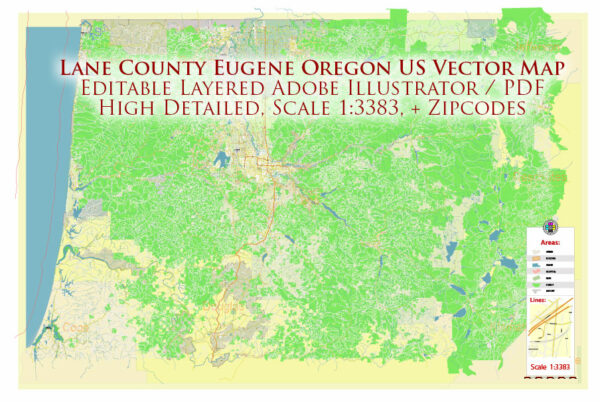Eugene, located in Lane County, Oregon, has a rich history of urban development that spans back to the mid-19th century. Here is an overview of the key points in the city’s urban development history:
- Early Settlement (1840s-1850s):
- The Eugene area was initially inhabited by the Kalapuya people for thousands of years before the arrival of European settlers.
- Eugene’s history as a city begins in the mid-19th century with the establishment of the Willamette Valley settlement in 1846.
- Early Growth and Incorporation (1850s-1870s):
- Eugene City, named after Eugene Skinner, one of its founders, began to grow as a hub for timber and agriculture.
- The city was officially incorporated in 1862, and the development of roads and transportation networks facilitated further growth.
- University of Oregon (1876):
- The establishment of the University of Oregon in 1876 played a crucial role in the city’s development. The university brought cultural and educational opportunities, contributing to Eugene’s growth as a regional center.
- Economic Diversification (Late 19th Century):
- Eugene’s economy diversified with the growth of the timber industry, agriculture, and commerce. The city became a transportation hub with the arrival of the Oregon and California Railroad in 1871.
- 20th Century Industrialization and Expansion:
- The early 20th century saw further industrialization, with Eugene becoming a center for wood products and manufacturing.
- The construction of dams on the Willamette River during the mid-20th century provided a stable power supply, attracting more industries to the area.
- Urban Planning and Infrastructure (Mid-20th Century):
- Urban planning efforts in the mid-20th century focused on improving infrastructure, including the development of the city’s road network.
- The expansion of the University of Oregon and the growth of the technology and education sectors contributed to the city’s economic development.
- Environmental Focus and Sustainability (Late 20th Century-21st Century):
- Eugene has a strong commitment to environmental sustainability, with a focus on preserving natural spaces and promoting eco-friendly practices.
- The city has invested in public transportation, bike-friendly infrastructure, and sustainable development projects.
- Cultural and Arts Scene:
- Eugene has developed a vibrant cultural and arts scene, with numerous theaters, galleries, and cultural events. The Hult Center for the Performing Arts is a notable venue in the city.
- Population Growth and Urban Challenges:
- Eugene has experienced population growth over the years, leading to challenges related to housing, transportation, and urban planning.
- The city has sought to address these challenges through community engagement, smart growth initiatives, and sustainable urban development practices.
- Modern Development and Innovation (21st Century):
- In recent years, Eugene has continued to evolve as a center for innovation, technology, and education. The city has attracted startups and businesses, contributing to its economic vitality.
Eugene’s history of urban development reflects its evolution from a small settlement to a dynamic and culturally rich city with a focus on sustainability and quality of life. The city’s commitment to preserving its natural surroundings while fostering economic and cultural growth has played a significant role in shaping its development.


 Author: Kirill Shrayber, Ph.D.
Author: Kirill Shrayber, Ph.D.